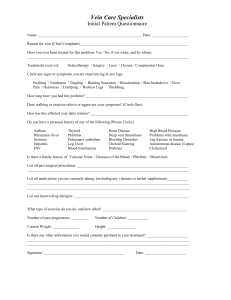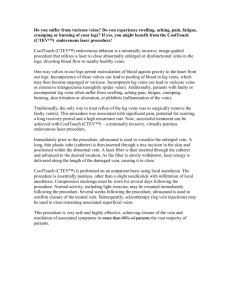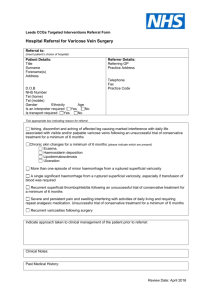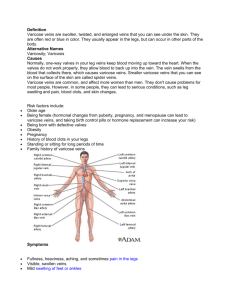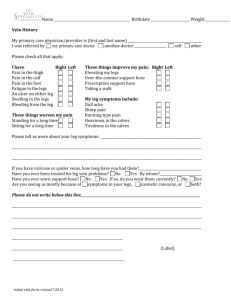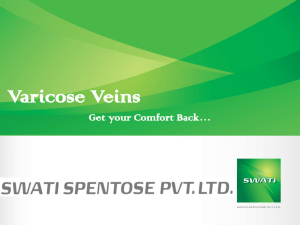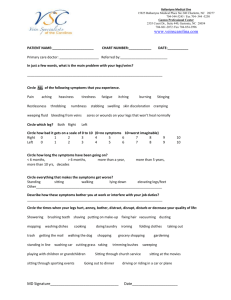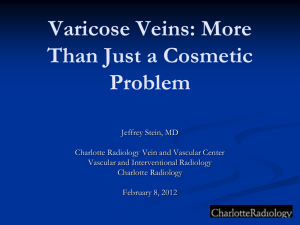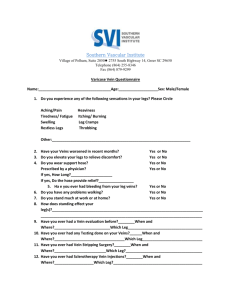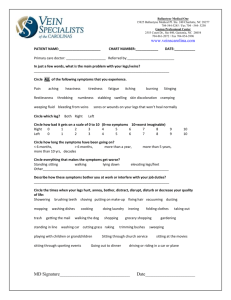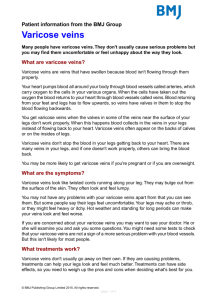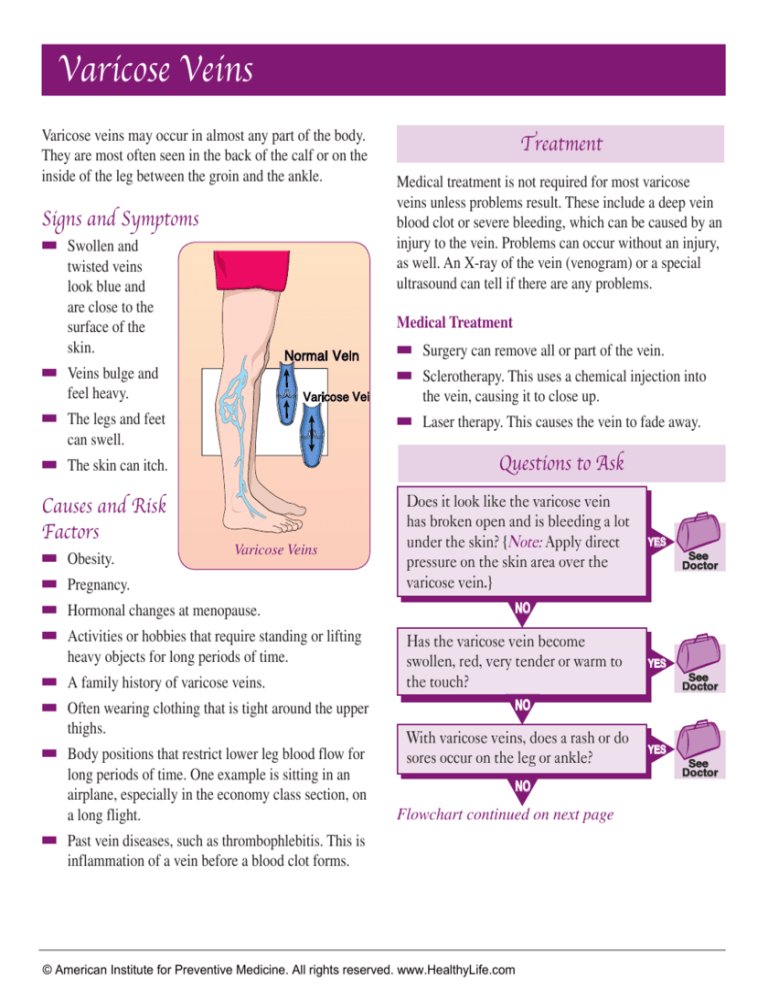
Varicose Veins
Varicose veins may occur in almost any part of the body.
They are most often seen in the back of the calf or on the
inside of the leg between the groin and the ankle.
Signs and Symptoms
■
Swollen and
twisted veins
look blue and
are close to the
surface of the
skin.
■
Veins bulge and
feel heavy.
■
The legs and feet
can swell.
■
The skin can itch.
Causes and Risk
Factors
Medical treatment is not required for most varicose
veins unless problems result. These include a deep vein
blood clot or severe bleeding, which can be caused by an
injury to the vein. Problems can occur without an injury,
as well. An X-ray of the vein (venogram) or a special
ultrasound can tell if there are any problems.
Medical Treatment
■
Surgery can remove all or part of the vein.
■
Sclerotherapy. This uses a chemical injection into
the vein, causing it to close up.
■
Laser therapy. This causes the vein to fade away.
Questions to Ask
Varicose Veins
■
Obesity.
■
Pregnancy.
■
Hormonal changes at menopause.
■
Activities or hobbies that require standing or lifting
heavy objects for long periods of time.
■
A family history of varicose veins.
■
Often wearing clothing that is tight around the upper
thighs.
■
Body positions that restrict lower leg blood flow for
long periods of time. One example is sitting in an
airplane, especially in the economy class section, on
a long flight.
■
Treatment
Does it look like the varicose vein
has broken open and is bleeding a lot
under the skin? {Note: Apply direct
pressure on the skin area over the
varicose vein.}
YES
See
Doctor
NO
Has the varicose vein become
swollen, red, very tender or warm to
the touch?
YES
See
Doctor
NO
With varicose veins, does a rash or do
sores occur on the leg or ankle?
NO
Flowchart continued on next page
Past vein diseases, such as thrombophlebitis. This is
inflammation of a vein before a blood clot forms.
© American Institute for Preventive Medicine. All rights reserved. www.HealthyLife.com
YES
See
Doctor
Varicose Veins, continued
Flowchart continued
Do varicose veins cause chronic, achy
pain in the legs?
YES
NO
Do you want to find out about
cosmetic treatments for varicose
veins?
YES
Call
Doctor
Call
Doctor
NO
Use
Self-Care
■
If your job or hobby requires you to stand, shift your
weight from one leg to the other every few minutes.
Just wiggling your toes can help, too.
■
Wear elastic support stockings or support hose, as
advised by your doctor.
■
Don’t wear clothing or undergarments that are tight
or constrict your waist, groin, or legs.
■
Eat high-fiber foods, like bran cereals, whole-grain
breads, and fresh fruits and vegetables, to promote
regularity. Constipation may be a factor in varicose
veins.
■
Elevate your legs when resting.
■
Exercise your legs. From a sitting position, rotate
your feet at the ankles, turning them first clockwise,
then counterclockwise, using a circular motion.
Next, extend your legs forward and point your toes
to the ceiling then to the floor. Next, lift your feet off
the floor and gently bend your legs back and forth at
the knees.
■
Get up and move about every 35 to 45 minutes when
traveling by air or even when sitting in an all-day
conference. Opt for an aisle seat in such situations.
■
Stop and take short walks at least every 45 minutes
when taking long car rides.
Self-Care / Prevention
■
Don’t cross
your legs when
sitting.
■
Exercise
regularly.
Walking is a
good choice. It
improves leg
strength and
vein strength.
■
■
Maintain a
healthy weight.
Lose weight
if you are
overweight.
Don’t stand for
long periods of
time.
For Information, Contact:
Walking improves leg strength
and vein strength.
American Academy of Dermatology
866.503.SKIN (503.7546)
www.aad.org
American College of Phlebology
www.phlebology.org

